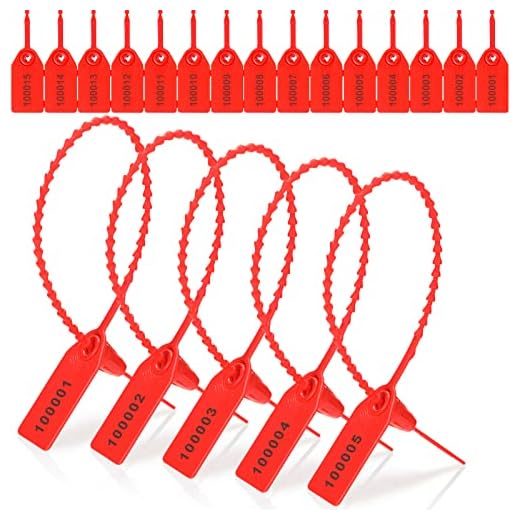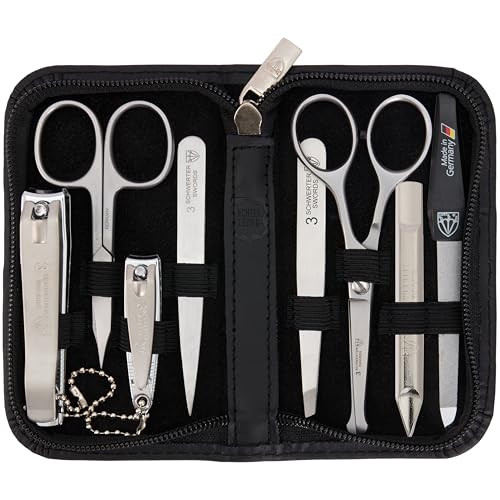







The Transportation Security Administration reserves the right to open inspected checked cases; non‑approved sealing mechanisms may be severed without notice. Choose devices that display Travel Sentry or SafeSkies accreditation so inspections are less likely to result in destructive access.
One‑time polymer fasteners offer minimal resistance: common cutters defeat them in seconds, and reapplication produces no reliable tamper‑evidence. Metal cable seals with unique serial identifiers increase visibility of interference, but determined thieves exploit zipper gaps, weak seams and unattended handling.
Practical checklist: keep electronics, medications, passports and receipts in carry‑on; select TSA‑recognized security devices with visible accreditation; photograph internal contents and exterior before departure; record serial numbers of any applied seals; insure high‑value items and retain proof of purchase.
At the airport, consider professional shrink‑wrapping services and hard‑shell cases with reinforced frames. If an applied seal is removed during inspection, photograph the opened case, obtain an inspection report from the carrier or screening authority, and request replacement documentation to support insurance claims.
Expectation management: seals function mainly as tamper‑evidence rather than theft prevention; combine accredited security devices, visible deterrents, photographic and documentary evidence, and consistent carry‑on practices to reduce loss risk during airline handling.
Are disposable cable seals permitted by TSA and major carriers?
Recommendation: Prefer TSA‑approved security closures on checked baggage; disposable plastic cable seals are permitted by TSA but are not treated as re‑sealable security – screening agents routinely cut them when opening a bag.
TSA policy gives screening personnel authority to open any carry‑on or checked bag. If an inspection is needed, disposable seals will normally be removed. No federal rule forbids carrying such fasteners inside bags, yet they offer no assurance against mandatory openings and are not equivalent to Travel Sentry or Safe Skies certified closures.
Major U.S. carriers generally lack an outright ban on disposable seals, but many airline help pages recommend certified security closures to prevent irreversible cutting by inspectors. International carriers and border authorities may apply different practices; on international itineraries, customs offices often perform their own inspections and removal of disposable seals is common. Liability for removed or cut seals is typically limited.
Practical steps: select numbered disposable seals and photograph serials before departure; attach clear external contact information; stow spare seals inside hand baggage; document external fastenings immediately after sealing; plan for removal by carrying a small cutting tool at destination. When a resealable option is required, choose baggage with factory‑installed fastenings or certified security closures rather than disposable single‑use seals.
Accessory references: best lightweight backpack leaf blower, best umbrella windy deck.
Do cable seals actually deter theft or only indicate tampering?
Recommendation: treat disposable plastic cable seals as tamper-evidence rather than as an anti-theft barrier.
Physical reality: inexpensive plastic fasteners are typically breached in 5–15 seconds with scissors, a pocket knife or wire cutters; breaches often leave small, repairable traces that can be masked by a quick replacement. Seals lacking unique identifiers are trivial to swap with visually similar pieces. Heavier metal seals or models with stamped serials increase the time and tools required to defeat the closure.
Tamper-evidence value: carriers and insurers accept claims more readily when documented signs of interference exist. Recording serial numbers, photographing indicator placement and the closure state immediately after packing raises the probability of a successful claim. Barcoded labels, numbered pull-seals and heat-shrink bands perform better as evidence markers than plain plastic fasteners.
Practical recommendations: select a rigid-shell case, keep high-value items in carry-on, protect main compartments with numbered tamper indicators, keep digital photos and receipts, log seal numbers and serials, and consider professional wrapping at departure terminals. Transparent inner pouches speed detection of missing items and reduce time spent inspecting contents.
Operational tip: wear protective gloves while packing to avoid transfer marks; see best gloves for dishwashing.
Applying cable fasteners to show tampering without harming sliders
Recommended: thread a short nylon cable fastener through both pull-tabs and secure with a tamper-evident numbered seal; leave 2–3 mm slack so slider assemblies and closure teeth remain unloaded.
Step-by-step application
- Choose placement: pass the fastener through both pull-tabs or through one pull-tab and a sturdy handle D-ring; avoid routing through fabric seams or directly across teeth/coil channels.
- Protect contact points: slide a 10–15 mm length of heat-shrink tubing or a soft silicone sleeve onto pull-tabs before routing to prevent abrasion and point pressure.
- Set tension: pull the fastener until snug but not tight – maintain a 2–3 mm gap between pull-tab ends so sliders are not compressed.
- Apply a one-time tamper seal: attach a numbered breakaway seal to the fastener head or adjacent loop so any cutting or removal is obvious.
- Trim tail: cut the remaining tail to 5–8 mm; do not re‑cinch after trimming.
- Document placement: photograph the seal number and exact fastening position and record the identifier separately from the case.
Materials and sizing
- Width: 2.5–4.8 mm recommended for most slider types; avoid >7.6 mm on lightweight closures to prevent bulk pressure.
- Material: nylon 6/6 or polypropylene with nominal tensile ratings 18–50 lb; pick lower tensile ratings if the aim is tamper indication rather than resisting force.
- Protective sleeve: 3–5 mm internal diameter heat-shrink tubing or silicone bead placed where the fastener contacts metal or fabric.
- Tamper seals: numbered, one-time breakaway plastic or frangible metal indicators that visibly fracture when cut or removed.
- Avoid threading through teeth or sewn seams – concentrated force there can deform tracks, sliders, or fabric.
- Do not overtighten; sliders should still move slightly when the fastener is stressed to confirm no preload on the closure.
- Anticipate inspections: security staff may cut one-time seals; keep spare seals and protective sleeves in carry items for reapplication.
- After travel inspect fastener, sleeve and pull-tabs for abrasion, deformation or melted plastic; replace at first sign of damage.
Inspection procedures and removal of single‑use plastic seals
If airport security needs to open a checked bag, officers will sever single‑use plastic seals and non‑approved fasteners, place an official inspection tag on or inside the item, and leave a written notice describing the action.
How inspections are carried out
Screening staff may open hand‑checked carry items in front of the passenger whenever practical; sealed containers inside carry bags are usually inspected without cutting external straps unless safety or detection equipment requires removal of the container. For checked containers, manual inspection teams will cut disposable plastic straps or other single‑use closures to access contents, inspect, then either reseal with an agency‑issued tamper tag or close without a replacement when no reseal material is available. Canine alerts, explosives trace positives, or X‑ray anomalies increase the likelihood that permanent or semi‑permanent closures will be removed.
Practical steps after inspection
Document the condition: photograph external closures and any identifying numbers on seals before departure; keep copies of the inspection notice left by the agency; carry high‑value items and essential medication in carry containers to avoid checked‑bag searches. If an external closure was severed and no agency tag was left, report to the airline’s baggage service office immediately at the airport and request a written record. For international travel, consult the relevant national aviation security authority ahead of departure since procedures and replacement‑seal practices vary by country.
Safer options: TSA-approved security devices, tamper-evident seals and reusable straps
Select Travel Sentry or Safe Skies certified security devices displaying the program logo and model number; opt for combination-style mechanisms to avoid carrying extra keys and to permit authorized screening access with official tools without destruction. Confirm certification on manufacturer listings and packaging prior to purchase and keep the product serial or model reference with trip documents.
Choose single-use tamper-evident seals with unique serialized numbers and barcode labels for visible audit trails. Preferred types: pull‑tight polymer seals for zipper pulls and frame anchor points, and steel or multi‑strand cable seals for higher‑value checked pieces where greater tensile resistance is desired; when a specification is provided, ISO 17712 marking indicates a seal manufactured to container‑security standards.
Pick reusable strap systems made of woven polyester or polypropylene 25–40 mm wide, with a metal‑reinforced buckle and an integrated, TSA‑accepted combination coupler. Features to prioritize: bright colors or high‑contrast patterns for quick visual checks, a quick‑release mechanism accessible to authorized screeners, and stitching or webbing rated to resist everyday abrasion and snags.
Document every chosen device: photograph placement, record serial numbers and combination codes in a secure note, and store images off the same device as the bag. If screening personnel open or remove a device, request an inspection receipt from the agency or carrier and file a property report immediately when items are missing or damaged; retain receipts and photos to support any claim.
FAQ:
Can I use zip ties to lock my checked luggage for a flight?
Yes, you can use zip ties as a simple fastener on checked bags, but they are not a secure locking solution. Security agents have the authority to open checked luggage for inspection and will cut any non-approved seal or lock, including zip ties, so they offer little protection against theft. Zip ties are single-use and easy to cut with common tools, so they mostly act as a tamper indicator rather than a barrier. For better protection, place valuables in your carry-on, use a lock that is accepted by airport security (look for Travel Sentry or similar markings), and consider tamper-evident seals that are explicitly accepted by the airline or security agency at your departure/arrival airports. Also photograph contents and keep a detailed packing list in case you need to report loss or damage.








